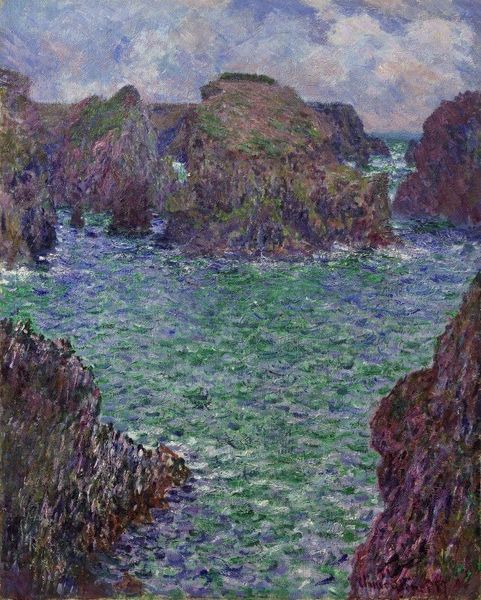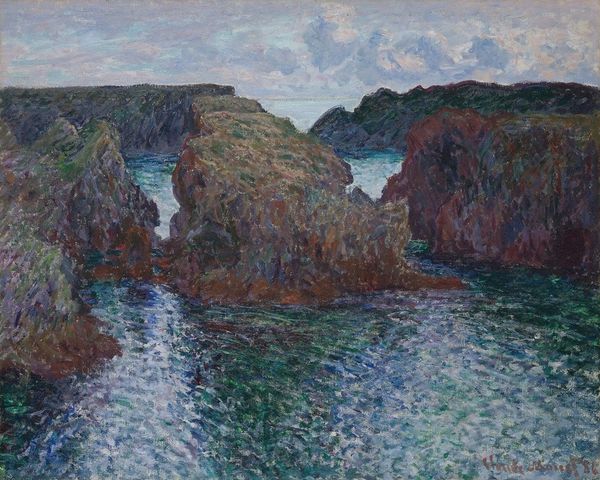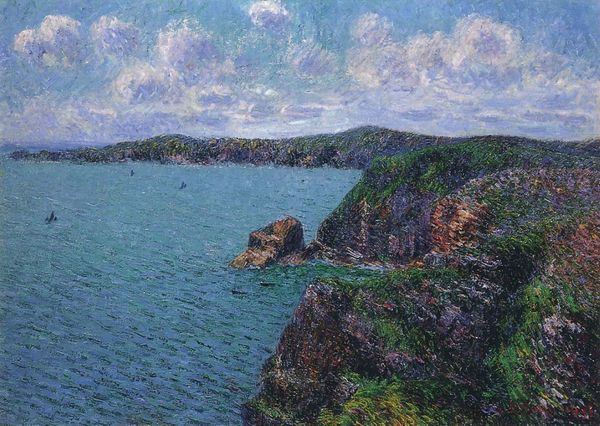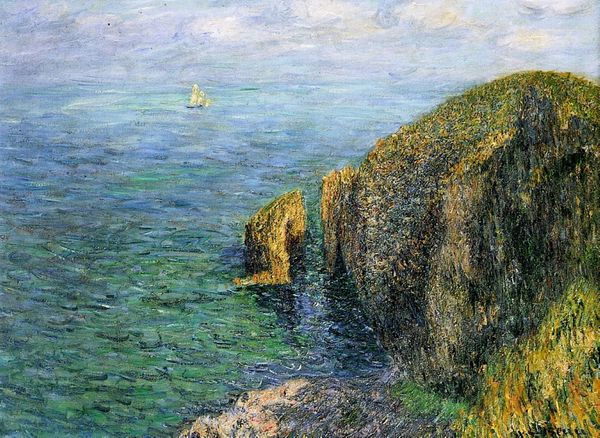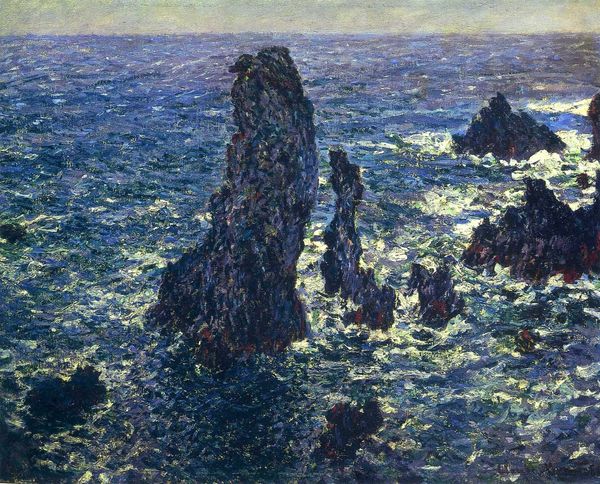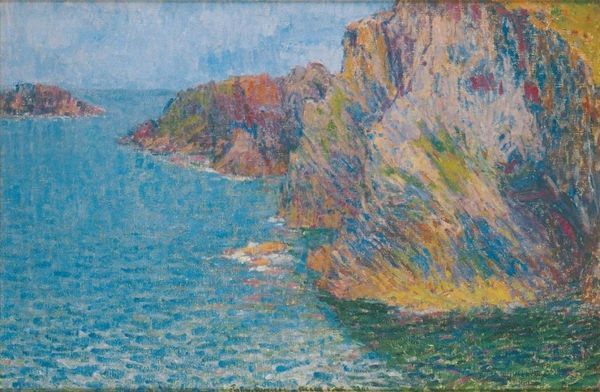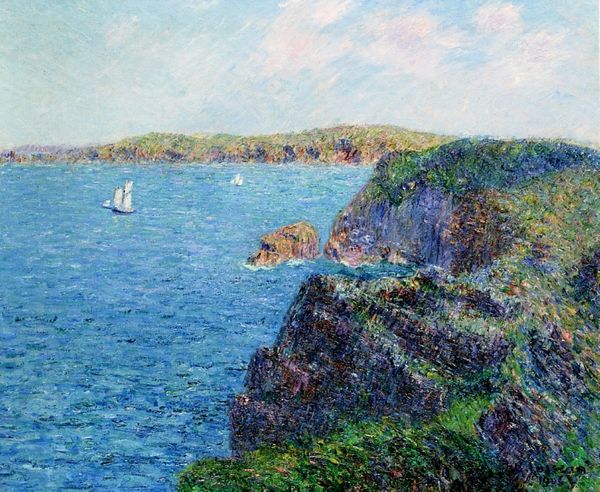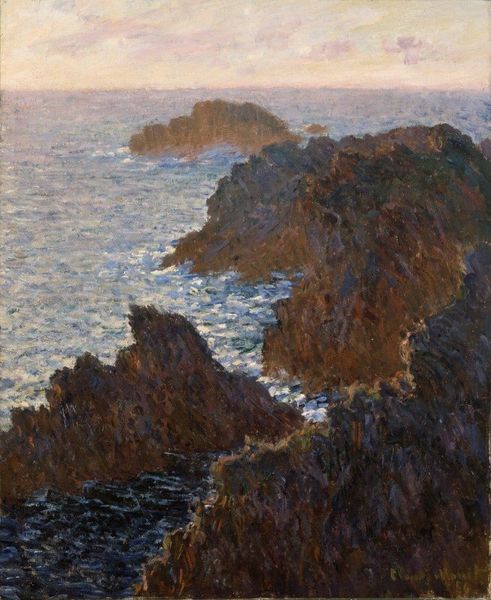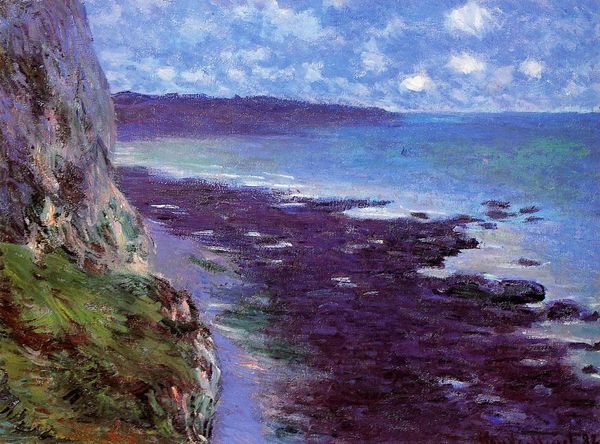
Copyright: Public domain
Curator: Looking at this oil painting by Claude Monet, executed in 1886, titled “Coming into Port-Goulphar, Belle-Ile”, I'm struck by how vibrant the brushstrokes are. Editor: Yes, it is immediately impactful! I find it quite dramatic. The way Monet captures the rocks emerging from the water... It's almost overwhelming, quite dark, almost brooding despite the style. Curator: It’s interesting to think about this as one in a series. Monet was captivated by the rugged coastline of Belle-Île, and he depicts this harbor multiple times in varied conditions. This reflects the late 19th-century art market, particularly its consumption and aestheticization of the natural landscape. Editor: Indeed. Structurally, the composition employs this beautiful contrast. The turbulent water seems contained by the jagged, stable masses of rock. Note his use of contrasting colors: the blues and greens of the water set against the warm earth tones of the cliffs. It's all quite visually stimulating. Curator: And it wasn't just Monet drawn to these areas. Other artists sought to depict the dramatic clash of nature found here, a trend that connects to the growing accessibility of these coastal regions with railway expansions and the rise of tourism. Artists like Monet were actively part of the burgeoning travel and leisure industries. Editor: Right. This intersection is fascinating because it emphasizes that even seemingly untouched nature becomes shaped by and for its human viewers. Monet isn’t just passively reflecting nature; he is actively constructing it with form and color. Curator: So true, we can look at this and see it for so many historical contexts of the area. Editor: It's a dance between direct representation and stylized interpretation, making it incredibly captivating. A master of formal landscape elements, that's for sure!
Comments
No comments
Be the first to comment and join the conversation on the ultimate creative platform.
